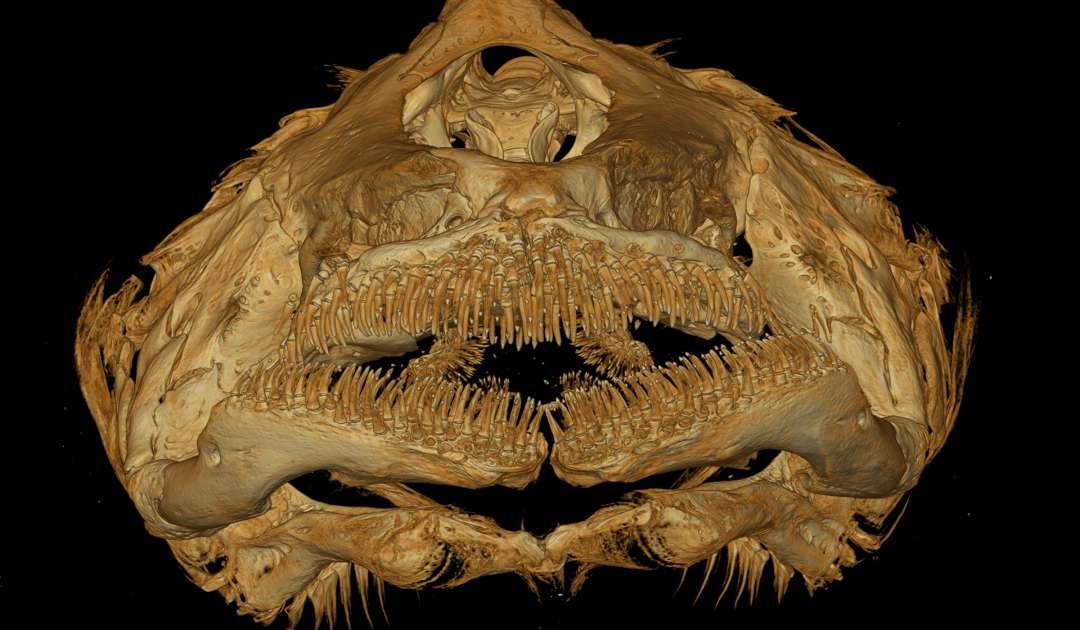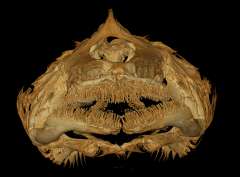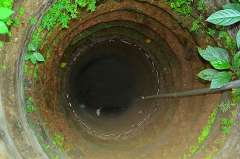To our foreign readers: we are sorry, but this page is not available in english.
Evolution in Absolute Darkness: New Fish Species Discovered in India
The new catfish species was discovered with the help of the local population
An Indian-German team of researchers, including Senckenberg scientist Dr. Ralf Britz, has studied the catfish genus Horaglanis in the southern Indian state of Kerala. The tiny members of this genus, only about three centimeters in length, live in local aquifers without light. As part of a broad-based “Citizen Science” project, the researchers were able to gather information on the distribution of the animals, their genetics, and evolutionary history – and they discovered a new species based on genetic studies. The study was published in the scientific journal “Vertebrate Zoology.”
Life in aquifers is characterized by complete darkness, a low concentration of nutrients, carbon, and dissolved oxygen, hydrographic isolation, and a limited ability to disperse. “Currently, 289 fish species are known from subterranean aquatic habitats worldwide – less than ten percent of them live in aquifers,” explains Dr. Ralf Britz of the Senckenberg Natural History Collections in Dresden, and he continues, “In order to obtain information from this almost unknown biotope, we conducted a six-year study of water-bearing laterite rock layers and their fascinating fish fauna in the southern Indian state of Kerala.”
In particular, the researchers focused on the catfish genus Horaglanis. These fishes live exclusively in aquifers, are very small, blind, and they lack pigments. “There are very few documented occurrences of these species – as a rule, these elusive little fish only come to the surface when a domestic well is being dug or cleaned,” adds Britz. For this reason, the biologist from Dresden and his Indian colleagues, led by Dr. Rajeev Raghavan from the University of Kochi and Dr. Neelesh Dahanukar from Shiv Nadar University in Delhi, also relied on the cooperation of local citizen scientists. Over a six-year period, they conducted a series of workshops, focus group discussions, and informal conversations with communities at several sites, including the type localities of the three Horaglanis species known to date. “Local people are often the only ones who get to see such well-hidden species. Therefore, they can play an important role in improving our scientific knowledge of this unusual fauna! We informed local villagers about the importance of subterranean fish species and their conservation needs and asked them to share information, photos, or videos with us when they encountered and/or collected these species.” The researchers complemented this “citizen science” approach with targeted collection efforts in wells and above-ground storage tanks, with scoop nets in shallow wetlands, water channels, home gardens, and plantations, and with the use of baited traps in excavated wells on farmsteads, in ponds, and caves.
“This allowed us to generate data sets with a total of 47 new site detections and 65 new genetic sequences. These show, among other things, that Horaglanis are endemic to the part of Kerala state south of the Palghat Gap – the mountain pass apparently represents a biogeographical barrier for the subterranean world as well,” explains Britz, and he adds, “The genus is characterized by a high level of genetic diversity that has evolved over millions of years – although the fishes’ appearance has changed remarkably little.”
In addition, the team succeeded in identifying a new species: Horaglanis populi is a catfish measuring no more than 32 millimeters, with no eyes and a blood-red body, and is genetically distinct from the three previously known Horaglanis species. “The specific name populi, the genitive of the Latin noun for “people,” honors the invaluable contributions of the interested public in Kerala who helped document the biodiversity of these subterranean fishes – including the discovery of the new species,” says Britz, and he adds, “Our Horaglanis project is an excellent example of how public involvement can greatly increase our knowledge of rarely collected organisms that live in relatively inaccessible habitats. Local people expand the researchers’ ‘eyes and ears’ by several orders of magnitude.”
Species with small ranges – such as Horaglanis populi – are considered to be at high risk of extinction, especially if they live in subterranean habitats. According to the study, fishes in the study area enjoy little or no protection under local or regional laws, and their habitats are embedded in densely populated landscapes. Both groundwater extraction and mining of laterite rock layers threaten the animals. “To ensure the survival of Kerala’s enigmatic subterranean catfishes, a planning and implementation approach involving a wide range of stakeholders is needed. This must also include the local population, whose support was instrumental in advancing our research to its current state,” adds Britz in conclusion.
Publication: Raghavan R, Sundar RL, Arjun CP, Britz R, Dahanukar N (2023) Evolution in the dark: Unexpected genetic diversity and morphological stasis in the blind, aquifer-dwelling catfish Horaglanis. Vertebrate Zoology 73: 57-74. https://doi.org/10.3897/vz.73.e98367



